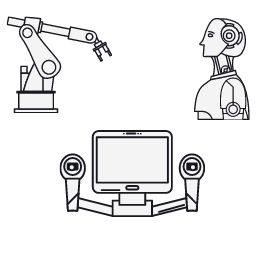
Innovation in business is undoubtedly a good direction. For years, the trend of establishing start-ups has not weakened, and despite the fact that most of them are failing, everyone dreams of becoming a so-called A “unicorn” (a start-up with a valuation of $ 1,000,000,000). Nevertheless, innovation is also automation – production companies that invest in the robotization of workplaces are in the lead here. Robots in the long run are a great way to increase production and minimize costs – they can work in harsh conditions in 3 shifts, non-stop. They do not go on sick leave, do not have holidays and do not demand pay raises. In addition – from the tax point of view – they have one more advantage – they are a method of taking advantage of the robotization relief.
Relief for robotization – announcements of the Ministry of Finance
Every entrepreneur planning (or using) robotization is certainly waiting impatiently for specific provisions in the act. The fact is that at the moment the robotization tax relief is still in the design phase – no law has been signed in this regard yet. Nevertheless, the Ministry of Finance has announced that the robotization relief will appear in 2021 and will be valid for five years (i.e. until the end of 2025).
Entrepreneurs can count on the deduction of 50% (say: fifty percent) of the costs incurred for investments in robotization. The good news is that all entities can benefit from this relief – regardless of the size or type of industry. Certainly, production plants will benefit the most from this – not only will they deduct half of the costs, but also increase work efficiency and significantly reduce employee costs. It is worth mentioning that the relief is also to cover the expenses incurred for training employees operating the robots and the costs of leasing robots.
Tax relief for robotization – what can be deducted?
According to the announcements of the Ministry of Finance, enterprises will be able to deduct from the tax base 50% of eligible costs incurred for investments related to:
- Purchase of new robots and cobots;
- Purchase of software;
- Purchase of various types of necessary equipment (including motion sensors, controllers, tracks, rotators, end effectors);
- Purchase of health and safety equipment;
- Purchase of training for employees operating robots.
Relief for robotization – similarities to R&D and IP Box relief
Currently, many entities use R&D and IP Box reliefs – on the basis of the data on these reliefs, the Ministry of Finance is preparing a draft robotization relief bill. It is estimated that thanks to it, the number of robots on the market will more than double. This is to translate into the reduction of employees holding positions that require monotonous and physically heavy activities and – as a result – increase in work efficiency, and thus increase in competitiveness.
As the project is based on a research and development tax relief project, it is not surprising that the procedures will be similar – the costs incurred for robotization will be deductible during the tax year, and at the time of submitting the annual tax return – an additional write-off will be made. We can only wait for the legislation to enter into force.
